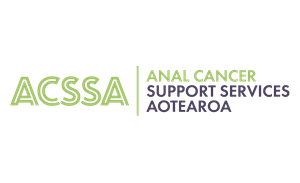New Guidelines for Anal Cancer Screening
International Anal Neoplasia Society's consensus guidelines for anal cancer screening
Elizabeth A. Stier, Megan A. Clarke, Ashish A. Deshmukh, Nicolas Wentzensen, Yuxin Liu, I. Mary Poynten, Eugenio Nelson Cavallari, Valeria Fink, Luis F. Barroso, Gary M. Clifford, Tamzin Cuming, Stephen E. Goldstone, Richard J. Hillman, Isabela Rosa-Cunha, Luciana La Rosa, Joel M. Palefsky, Rosalyn Plotzker, Jennifer M. Roberts, Naomi Jay … See fewer authors
First published: 31 January 2024 https://doi.org/10.1002/ijc.34850
Megan A. Clarke and Ashish A. Deshmukh contributed equally to this study.
Disclaimer: The authors alone are responsible for the views expressed in this paper and they do not necessarily represent the views, decisions, or policies of the institutions with which they are affiliated.
Abstract
The International Anal Neoplasia Society (IANS) developed consensus guidelines to inform anal cancer screening use among various high-risk groups. Anal cancer incidence estimates by age among risk groups provided the basis to identify risk thresholds to recommend screening. Guided by risk thresholds, screening initiation at age 35 years was recommended for men who have sex with men (MSM) and transgender women (TW) with HIV. For other people with HIV and MSM and TW not with HIV, screening initiation at age 45 years was recommended. For solid organ transplant recipients, screening initiation beginning from 10 years post-transplant was recommended. For persons with a history of vulvar precancer or cancer, screening initiation was recommended starting within 1 year of diagnosis of vulvar precancer or cancer. Persons aged ≥45 years with a history of cervical/vaginal HSIL or cancer, perianal warts, persistent (>1 year) cervical HPV16, or autoimmune conditions could be considered for screening with shared decision-making, provided there is adequate capacity to perform diagnostic procedures (high-resolution anoscopy [HRA]). Anal cytology, high-risk (hr) human papillomavirus (HPV) testing (including genotyping for HPV16), and hrHPV-cytology co-testing are different strategies currently used for anal cancer screening that show acceptable performance. Thresholds for referral for HRA or follow-up screening tests are delineated. These recommendations from IANS provide the basis to inform management of abnormal screening results, considering currently available screening tools. These guidelines provide a pivotal foundation to help generate consensus among providers and inform the introduction and implementation of risk-targeted screening for anal cancer prevention.
What's new?
Recently, treatment of anal high-grade squamous intraepithelial lesions (HSIL) was found to reduce anal cancer risk in people living with HIV. However, there are no current comprehensive anal cancer screening guidelines. The International Anal Neoplasia Society (IANS) recommendations provide evidence-based consensus guidance for which populations should be offered anal cancer screening and for management of abnormal screening results, considering currently available screening tools. The IANS guidelines provide a basis for expansion of anal cancer screening infrastructure to all at-risk populations.
If you would like to read the full article here is the link

